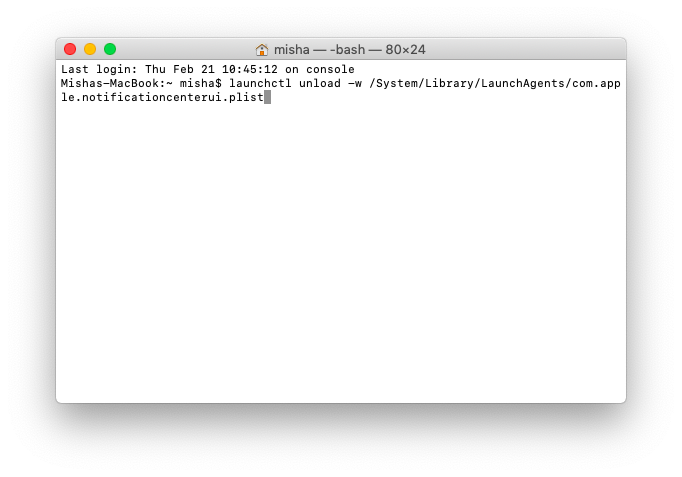Sep 14, 2018 Start-up programs are programs which start when you boot up your computer. This can both make your computer's start-up process slower than necessary and crowd your computer's RAM. To disable these programs, do the following: Press Ctrl+⇧ Shift+Esc (or right-click the taskbar and then click Task Manager). Clear up space by getting rid of rarely used applications, duplicate files, and everything in your trash. If you're having trouble finding what to get rid of, download something like Dr. Cleaner or Monolingual, which help you automatically find files that you can safely delete from your Mac.
One of the most common questions among Mac users today is how to reclaim enough memory to provide great working performance. People are concerned about keeping their Mac in a good condition, so they look for any useful methods for speeding it up. The first solution that comes to mind is to do an effective Mac cleaning to remove unnecessary files and prevent system glitches.
But sometimes users don’t know how to clean Mac to free memory or have no time to clean their PCs manually. We understand that this is a boring or difficult process, but it is highly recommended to start with reclaiming RAM memory. This will definitely be useful for boosting the performance of your computer.
Try These Three Ways to Free Inactive Memory on Mac OS X
First, let’s clarify what inactive memory is on Mac. Inactive memory is used by recently active and terminated applications. The system of your computer saves this memory in case you want to use these applications again. If you no longer want to open those programs, the inactive memory will eventually be released or transferred.
But what to do when there is not enough memory and you see your Mac’s performance degradation? In this situation, we advise you to clear the inactive RAM by following the instructions below.
Before we begin, let us introduce one very useful and interesting application for Mac, namely MacFly Pro. This innovative cleaning software has been developed to take care of your Mac and keep it in a nice shape. MacFly Pro does the following: it removes inactive or old apps, as well as related files, cleans inactive memory, clears the cache and duplicates, gets rid of language and log files, and scans the overall condition to warn system of violations or threats. So if you want a fast and proper cleaning for your Mac, make sure you download and run MacFly Pro on your PC.
And now, we go directly to the ways how to free up ram on Mac:
1. Use Terminal
Open the Terminal application on your Mac.
Then, enter the command below:
sudo purge
After that, enter the password to clear inactive memory.
The advantage of this simple method is that it’s a default application and you don’t need to download any other programs. On the other hand, it might cause some slowdowns and so that you will have to enter the lines one more time.
2. Use Script Editor
The second way how to free up ram mac is to use Script Editor (the most popular technique used by Apple developers). Now, follow these steps:
Launch Script Editor
This is how it looks in an opened window:
Next, write down the following text:
display dialog “Free inactive RAM?” buttons {“Cancel”, “OK”} with icon 2 with title “Freeing RAM” default button 2
set buttonAnswer to the button returned of the result
if buttonAnswer is “ОК” then
say “Freeing RAM. Wait please.”
tell application “Terminal”

do shell script “purge”
quit
end tell
say “Done!”
end if
After that, you should press ⌘+S and save the script in Application folders. Also, select Application format instead of Script.
This specific app is certainly useful, but actually, it is hard to open an app if you urgently need to clean your RAM on a Mac.
3. Use Third-Party Software
The last thing you do to free RAM is to look for and find some efficient cleaning applications. For instance, MacFly Pro is a great digital software and document scanner that will take care of your PC. With this app, you will forget about the necessity to clean Mac manually since it will do it for you in a matter of minutes. What is more, it will constantly support the system and optimize the performance of your Mac OS X.
Please enable JavaScript to view the comments powered by Disqus.Optimized Storage in macOS Sierra and later* can save space by storing your content in iCloud and making it available on demand. When storage space is needed, files, photos, movies, email attachments, and other files that you seldom use are stored in iCloud automatically. Each file stays right where you last saved it, and downloads when you open it. Files that you’ve used recently remain on your Mac, along with optimized versions of your photos.
* If you haven't yet upgraded to macOS Sierra or later, learn about other ways to free up storage space.
Find out how much storage is available on your Mac
Choose Apple menu > About This Mac, then click Storage. This is an overview of available storage space on your Mac, as well as the space used by different categories of files:
Click the Manage button to open the Storage Management window, pictured below. (The Manage button is available only in macOS Sierra or later.)
Manage storage on your Mac
The Storage Management window offers recommendations for optimizing your storage. If some recommendations are already turned on, you will see fewer recommendations.
Store in iCloud
Click the Store in iCloud button, then choose from these options:
- Desktop and Documents. Store all files from these two locations in iCloud Drive. When storage space is needed, only the files you recently opened are kept on your Mac, so that you can easily work offline. Files stored only in iCloud show a download icon , which you can double-click to download the original file. Learn more about this feature.
- Photos. Store all original, full-resolution photos and videos in iCloud Photos. When storage space is needed, only space-saving (optimized) versions of photos are kept on your Mac. To download the original photo or video, just open it.
- Messages. Store all messages and attachments in iCloud. When storage space is needed, only the messages and attachments you recently opened are kept on your Mac. Learn more about Messages in iCloud.
Storing files in iCloud uses the storage space in your iCloud storage plan. If you reach or exceed your iCloud storage limit, you can either buy more iCloud storage or make more iCloud storage available. iCloud storage starts at 50GB for $0.99 (USD) a month, and you can purchase additional storage directly from your Apple device. Learn more about prices in your region.
Optimize Storage
Click the Optimize button, then choose from these options.
- Automatically remove watched movies and TV shows. When storage space is needed, movies or TV shows that you purchased from the iTunes Store and already watched are removed from your Mac. Click the download icon next to a movie or TV show to download it again.
- Download only recent attachments. Mail automatically downloads only the attachments that you recently received. You can manually download any attachments at any time by opening the email or attachment, or saving the attachment to your Mac.
- Don't automatically download attachments. Mail downloads an attachment only when you open the email or attachment, or save the attachment to your Mac.
Optimizing storage for movies, TV shows, and email attachments doesn't require iCloud storage space.
Empty Trash Automatically
Empty Trash Automatically permanently deletes files that have been in the Trash for more than 30 days.
Reduce Clutter

Reduce Clutter helps you to identify large files and files you might no longer need. Click the Review Files button, then choose any of the file categories in the sidebar, such as Applications, Documents, Music Creation, or Trash.
You can delete the files in some categories directly from this window. Other categories show the total storage space used by the files in each app. You can then open the app and decide whether to delete files from within it.
Learn how to redownload apps, music, movies, TV shows, and books.
Where to find the settings for each feature
The button for each recommendation in the Storage Management window affects one or more settings in other apps. You can also control those settings directly within each app.

- If you're using macOS Catalina, choose Apple menu > System Preferences, click Apple ID, then select iCloud in the sidebar: Store in iCloud turns on the Optimize Mac Storage setting on the right. Then click Options next to iCloud Drive: Store in iCloud turns on the Desktop & Documents Folders setting. To turn off iCloud Drive entirely, deselect iCloud Drive.
In macOS Mojave or earlier, choose Apple menu > System Preferences, click iCloud, then click Options next to iCloud Drive. Store in iCloud turns on the Desktop & Documents Folders and Optimize Mac Storage settings. - In Photos, choose Photos > Preferences, then click iCloud. Store in iCloud selects iCloud Photos and Optimize Mac Storage.
- In Messages, choose Messages > Preferences, then click iMessage. Store in iCloud selects Enable Messages in iCloud.
- If you're using macOS Catalina, open the Apple TV app, choose TV > Preferences from the menu bar, then click Files. Optimize Storage selects “Automatically delete watched movies and TV shows.”
In macOS Mojave or earlier, open iTunes, choose iTunes > Preferences from the menu bar, then click Advanced. Optimize Storage selects “Automatically delete watched movies and TV shows.” - In Mail, choose Mail > Preferences from the menu bar, then click Accounts. In the Account Information section on the right, Optimize Storage sets the Download Attachments menu to either Recent or None.
Best Mac Games That Don't Take Up Memory Lyrics
Empty Trash Automatically: From the Finder, choose Finder > Preferences, then click Advanced. Empty Trash Automatically selects “Remove items from the Trash after 30 days.”
Other ways that macOS helps automatically save space
With macOS Sierra or later, your Mac automatically takes these additional steps to save storage space:
- Detects duplicate downloads in Safari, keeping only the most recent version of the download
- Reminds you to delete used app installers
- Removes old fonts, languages, and dictionaries that aren't being used
- Clears caches, logs, and other unnecessary data when storage space is needed
How to free up storage space manually
Even without using the Optimized Storage features of Sierra or later, you can take other steps to make more storage space available:
- Music, movies, and other media can use a lot of storage space. Learn how to delete music, movies, and TV shows from your device.
- Delete other files that you no longer need by moving them to the Trash, then emptying the Trash. The Downloads folder is good place to look for files that you might no longer need.
- Move files to an external storage device.
- Compress files.
- Delete unneeded email: In the Mail app, choose Mailbox > Erase Junk Mail. If you no longer need the email in your Trash mailbox, choose Mailbox > Erase Deleted Items.
Learn more
Best Mac Games That Don't Take Up Memory Drive
- When you duplicate a file on an APFS-formatted volume, that file doesn't use additional storage space on the volume. Deleting a duplicate file frees up only the space required by any data you might have added to the duplicate. If you no longer need any copies of the file, you can recover all of the storage space by deleting both the duplicate and the original file.
- If you're using a pro app and Optimize Mac Storage, learn how to make sure that your projects are always on your Mac and able to access their files.